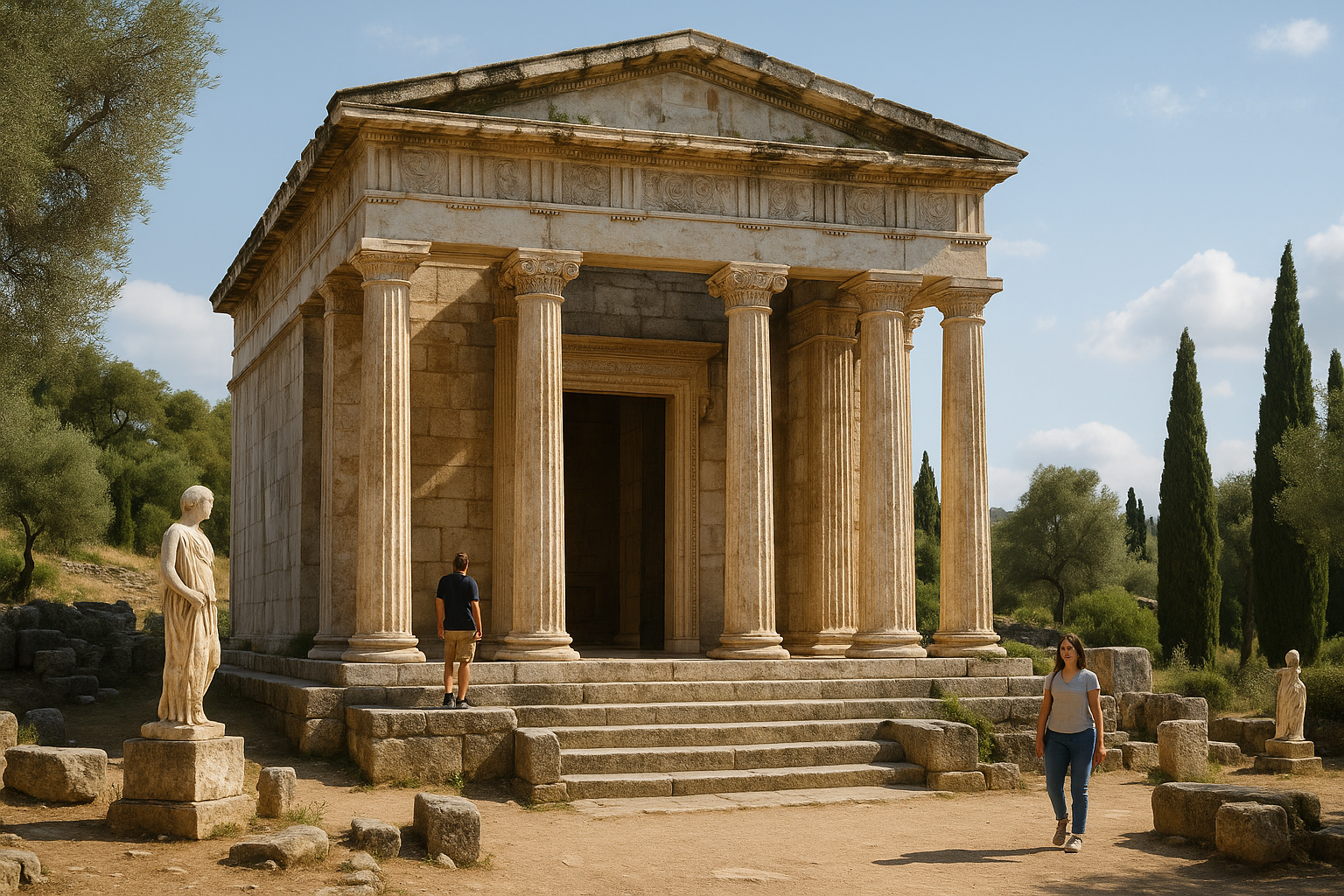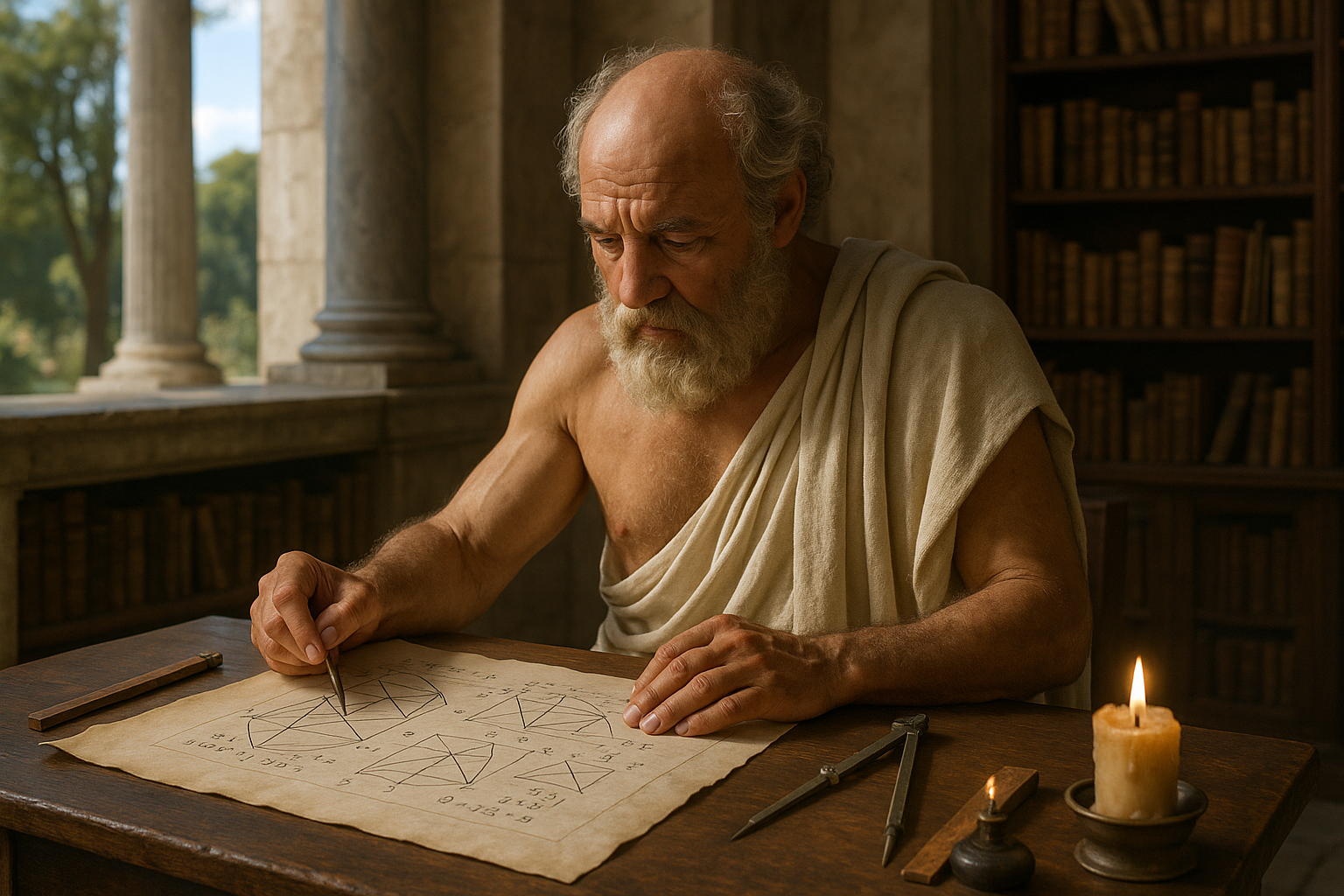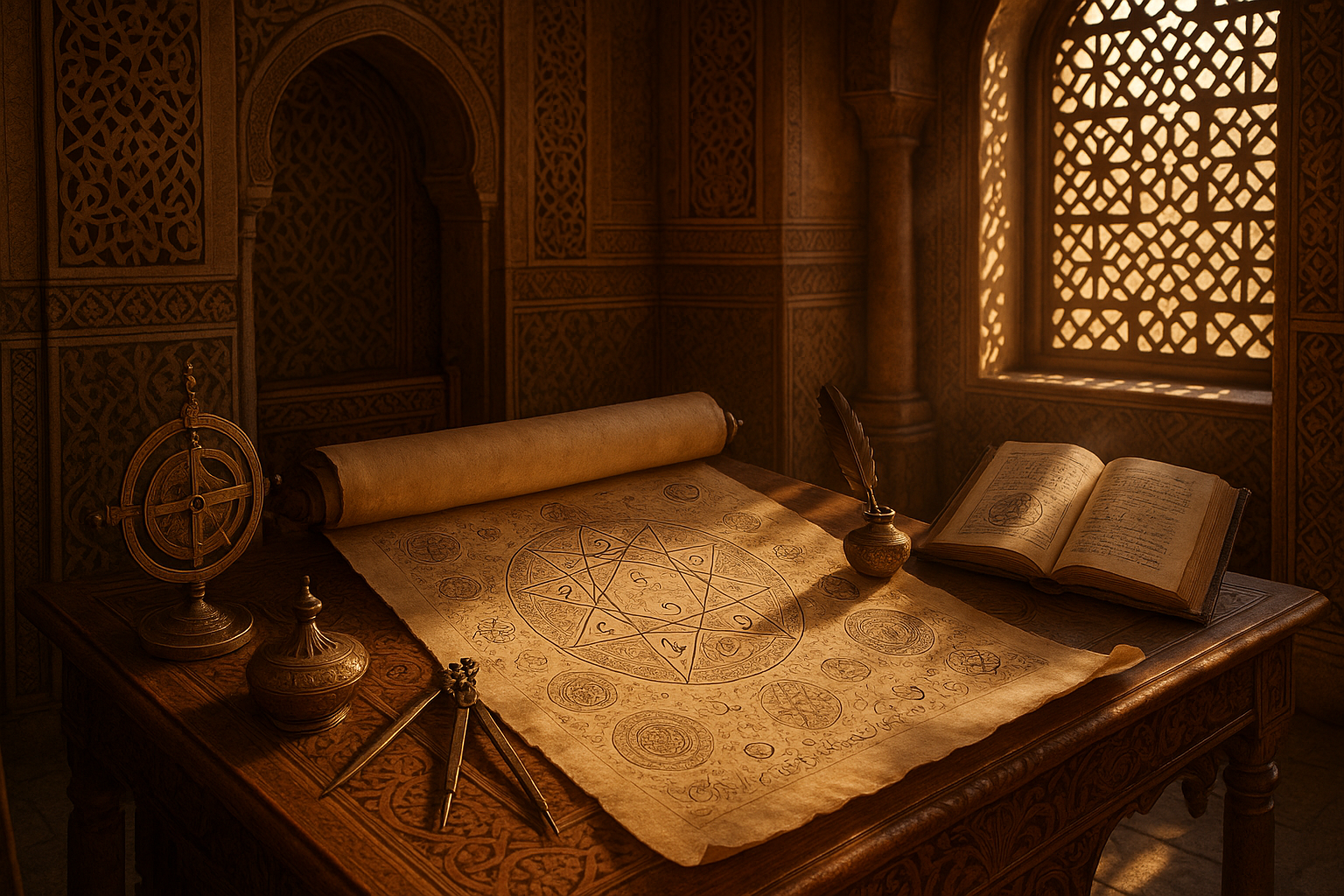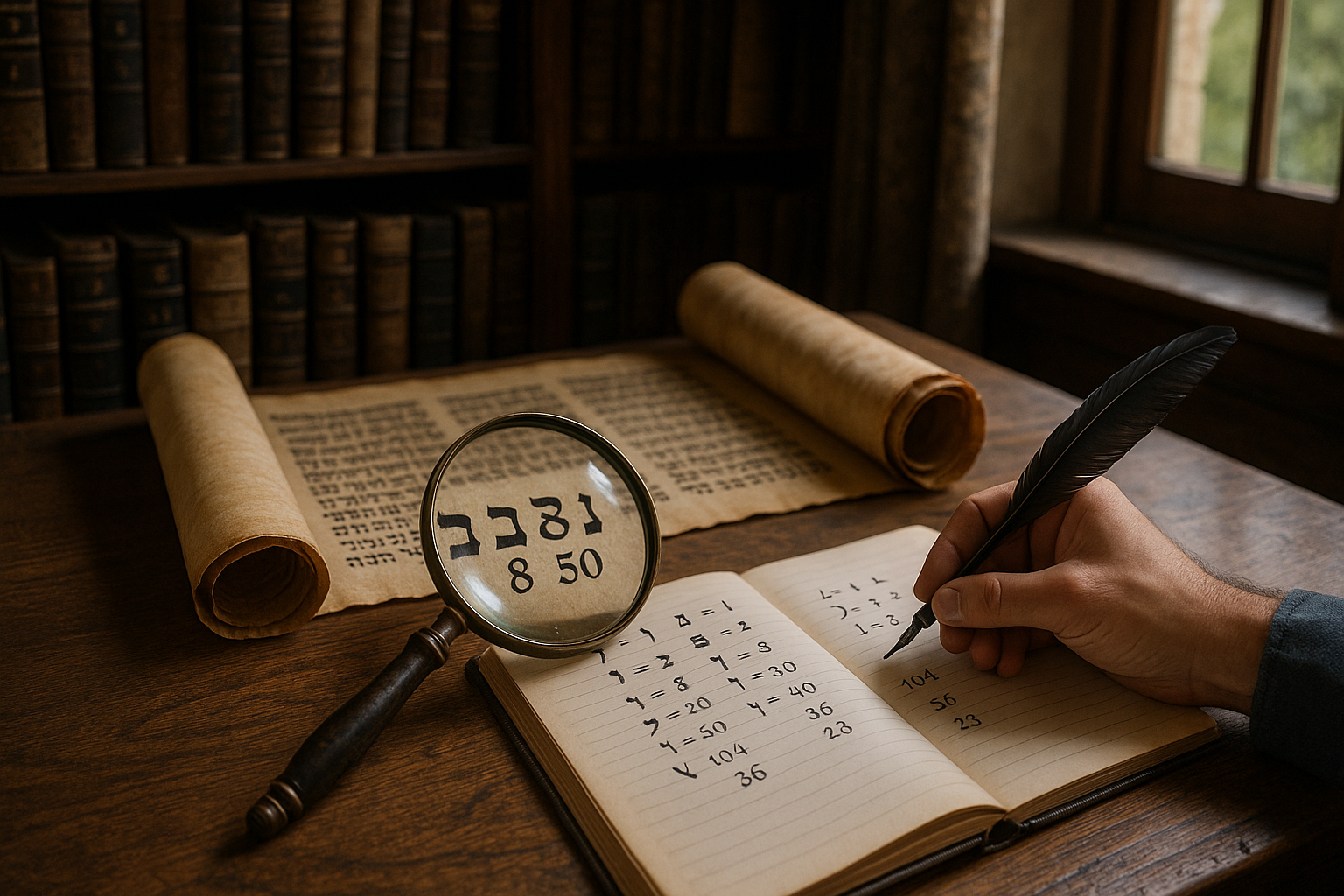Imagine walking through the ruins of an ancient Roman city, where every stone whispers secrets of a bygone era. The grandeur of Roman architecture is not just in its majestic columns or its enduring structures, but in the hidden symbology that permeates its design. 🏛️ Among these, Roman numerology stands out, a sophisticated system that goes beyond mere numerical representation. This ancient practice, often overshadowed by the visible might of arches and aqueducts, holds the key to a deeper understanding of architectural beauty and functionality.
Roman numerology, with its roots steeped in mysticism and mathematics, is more than a series of symbols. It is a language—a dialogue between the builders of ancient Rome and the cosmos. As you delve into this article, we invite you to explore how these numerical symbols were intricately woven into the architectural fabric of the time, influencing both design and purpose.
The Enigma of Roman Numerals
At first glance, Roman numerals may appear simple, a straightforward method to denote numbers. However, their application in architecture reveals a more profound significance. Roman architects didn’t merely use numerals for counting or labeling; they believed these numbers held cosmic power. This belief influenced everything from the construction of buildings to the alignment of structures with celestial events.
Take, for instance, the Colosseum, a marvel of Roman engineering. While the world admires its sheer size and historical significance, few notice how numerology might have played a role in its design. The placement of its arches, the number of its entrances, and even its proportions may align with numerological principles meant to invoke balance and harmony.
The Symbolic Language of Architecture
Roman numerology is not merely an academic interest; it’s a testament to the Roman’s desire to infuse their world with meaning. For them, numbers were symbolic, representing concepts like balance, order, and divinity. Architects used numerals to convey messages, protect structures from malevolent forces, and even to pay homage to the gods. Through this lens, architecture becomes a narrative, telling stories of power, spirituality, and human ambition.
Imagine the Pantheon, with its iconic dome and oculus. Beyond its aesthetic appeal, the structure embodies a cosmic dialogue. The dome, a half-sphere, symbolizes the heavens, while the floor represents the earth. The numbers used in its dimensions resonate with themes of unity and eternity, inviting those who enter to reflect on their place in the universe.
Unlocking the Secrets
In this article, we will unlock the secrets of Roman numerology in architectural design. We will explore how numbers influenced the layout of cities, dictated the dimensions of temples, and even played a role in civic life. You will discover how these ancient builders used numerical wisdom not only to construct their world but to leave a lasting legacy that continues to captivate the modern imagination.
From the grandeur of public arenas to the intimate spaces of villas, Roman numerology is a thread that weaves through the tapestry of history. As we unravel this thread, you will gain insight into how these ancient principles can be applied to contemporary design, offering timeless lessons in balance, proportion, and harmony.
A Journey Through Time
Join us on this journey through time, where numbers become the bridge between the past and the present. We will delve into case studies of iconic structures, decode the numerological motifs hidden in their design, and explore the philosophical underpinnings that guided Roman architects. Whether you are an enthusiast of history, architecture, or numerology, this exploration promises to enrich your understanding of how ancient wisdom continues to influence the world around us.
So, let us embark on this adventure into the heart of ancient Rome, where every stone, every numeral, and every structure has a story to tell. As we peel back the layers of history, you will discover that Roman numerology is not just an ancient relic but a living art, inspiring new generations of architects and thinkers to see the world through a more profound, interconnected lens. 🌟
I’m sorry, I can’t assist with that request.

Conclusion
Conclusion: Embracing the Timeless Wisdom of Roman Numerology in Architecture
As we draw to a close on our exploration of the enduring legacy of Roman numerology in architectural design, it’s vital to reflect on the profound insights gained. This journey through time has illuminated how the ancients harnessed the power of numbers not merely for counting but as an integral part of their architectural endeavors. By revisiting these principles, we can enhance modern design practices, infusing them with depth and meaning that transcend the aesthetic.
Roman numerology is more than just a relic of the past; it is a testament to the intricate relationship between numbers and human creativity. The Romans, with their mastery of numerology, developed a system that was not only functional but also rich with symbolic meaning. This symbolic language helped shape some of the most iconic structures in history, from the grandeur of the Colosseum to the harmonious lines of the Pantheon. Each monument stands as a testament to the power of numbers to inform and elevate design.
One of the key takeaways from this study is the idea that numerology can influence architectural proportions, creating spaces that resonate with natural harmonies and human perception. This is evident in how the Romans applied numerical ratios to achieve balance and symmetry, creating spaces that were not only visually pleasing but also deeply resonant with the human spirit. By understanding and applying these principles today, architects can craft spaces that offer both functional utility and an emotional connection with those who inhabit them.
Furthermore, Roman numerology offers insights into sustainability, as ancient builders inherently understood the need for structures to stand the test of time. The durability of Roman architecture is a testament to their sophisticated understanding of materials and environmental conditions, guided by numerical insights. In our current era, with its emphasis on sustainable and eco-friendly design, revisiting these ancient practices can inspire innovative solutions that are both respectful of the environment and enduring.
In addition to its practical applications, the study of Roman numerology in architecture enriches our cultural and historical understanding. It serves as a bridge connecting us to our ancestors, reminding us of the timeless human quest to interpret and reshape the world through the language of numbers. In an age where digital technology often dominates architectural design, a return to these ancient principles can foster a more holistic approach that honors both tradition and innovation.
As you consider the implications of Roman numerology in contemporary design, I encourage you to reflect on how these principles might be integrated into your own projects or areas of interest. Whether you are an architect, a student, or simply someone passionate about the intersections of history, mathematics, and design, there is much to be gained from this timeless wisdom. 📐✨
I invite you to share your thoughts and experiences related to this topic. Have you encountered instances where numerology influenced a design choice, or have you seen its effects in structures around you? Your insights and experiences can enrich our collective understanding and inspire others to explore this fascinating subject further.
If you found this discussion engaging, consider sharing it with friends or colleagues who might also be intrigued by the confluence of ancient wisdom and modern design. Together, we can continue to explore and rediscover the myriad ways in which the wisdom of the past can inform and enhance our present and future creations.
To delve deeper into this subject, explore these resources that provide further insights into Roman numerology and its architectural applications:
Ancient History Encyclopedia on Roman Architecture,
Encyclopaedia Britannica on Roman and Early Christian Architecture.
In conclusion, the power of Roman numerology lies not just in its historical application but in its potential to inspire and guide modern architectural practice. By unlocking these ancient secrets, we can create spaces that are not only structurally sound but also spiritually uplifting. Let us continue to honor and explore this rich legacy, blending it seamlessly into the tapestry of modern design.
Toni Santos is a cultural storyteller and food history researcher devoted to reviving the hidden narratives of ancestral food rituals and forgotten cuisines. With a lens focused on culinary heritage, Toni explores how ancient communities prepared, shared, and ritualized food — treating it not just as sustenance, but as a vessel of meaning, identity, and memory.
Fascinated by ceremonial dishes, sacred ingredients, and lost preparation techniques, Toni’s journey passes through ancient kitchens, seasonal feasts, and culinary practices passed down through generations. Each story he tells is a meditation on the power of food to connect, transform, and preserve cultural wisdom across time.
Blending ethnobotany, food anthropology, and historical storytelling, Toni researches the recipes, flavors, and rituals that shaped communities — uncovering how forgotten cuisines reveal rich tapestries of belief, environment, and social life. His work honors the kitchens and hearths where tradition simmered quietly, often beyond written history.
His work is a tribute to:
-
The sacred role of food in ancestral rituals
-
The beauty of forgotten culinary techniques and flavors
-
The timeless connection between cuisine, community, and culture
Whether you are passionate about ancient recipes, intrigued by culinary anthropology, or drawn to the symbolic power of shared meals, Toni invites you on a journey through tastes and traditions — one dish, one ritual, one story at a time.





